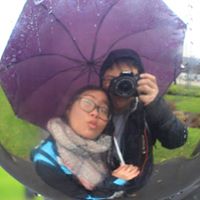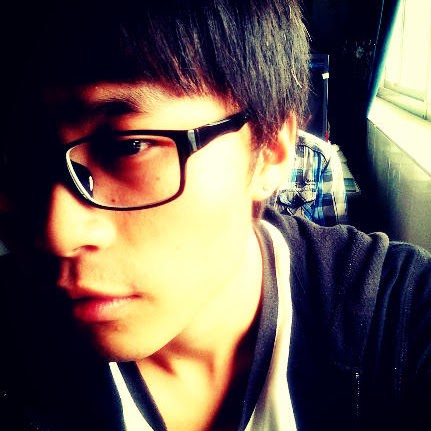Vincent Charles Cheung
age ~44
from San Carlos, CA
- Also known as:
-
- Vincent C Cheung
Vincent Cheung Phones & Addresses
- San Carlos, CA
- Redwood City, CA
- Palo Alto, CA
- Redmond, WA
Isbn (Books And Publications)



Name / Title
Company / Classification
Phones & Addresses
Owner
Fred's Food Mart
Ret Groceries
Ret Groceries
625 S Mary Ave, Sunnyvale, CA 94087
(408)7332436
(408)7332436
Manager
Oak Center Towers
Performing Arts · Residential Care Services
Performing Arts · Residential Care Services
1515 Market St, Oakland, CA 94607
(510)4651166, (510)4655622
(510)4651166, (510)4655622
Vice President Customer Intelligence
24 HOUR FITNESS WORLDWIDE INC
12647 Alcosta Blvd STE 500, San Ramon, CA 94583
(925)5433100
(925)5433100
Aiga Care LLC
34195 Oneil Ter, Fremont, CA 94555
M
Chase Film Group, LLC
2025 Cedar Hl St, Las Vegas, NV 89128
33561 Colgate Dr, Union City, CA 94587
4855 Hidalgo Ave, San Diego, CA 92117
33561 Colgate Dr, Union City, CA 94587
4855 Hidalgo Ave, San Diego, CA 92117
Us Patents
-
Automated Memory Creation And Retrieval From Moment Content Items
view source -
US Patent:20220335538, Oct 20, 2022
-
Filed:Apr 19, 2021
-
Appl. No.:17/234719
-
Inventors:- Menlo Park CA, US
Chengxuan Bai - San Mateo CA, US
Jiemin Zhang - Sunnyvale CA, US
Vincent Charles Cheung - San Carlos CA, US
Andrew Pitcher Thompson - Tarrytown NY, US
Maheen Sohail - San Francisco CA, US
Tali Zvi - San Carlos CA, US -
International Classification:G06Q 50/00
G06F 40/30
G06F 16/9535
G06F 16/901
G06N 20/00 -
Abstract:The present embodiments relate to automated memory creation and retrieval from moment content items. In some implementations, the automated memory creation and retrieval system can obtain moment content items from user-designated sources with a single user perspective or multiple user perspectives. The moment content items can be assigned tags and arranged in chronological order. The arranged moment content items can be clustered into memory content items based on clustering conditions. Once memory content items are created, they can be arranged into a memory hierarchy made up of connected nodes. In some implementations, the memory content items are also linked together based on similarity in various dimensions in a memory graph. The automated memory creation and retrieval system can receive search criteria for memories from a user interface and provide the user with memories from matched nodes in the memory hierarchy or linked memories in the memory graph.
-
Modifying Capture Of Video Data By An Image Capture Device Based On Video Data Previously Captured By The Image Capture Device
view source -
US Patent:20230110282, Apr 13, 2023
-
Filed:Dec 13, 2022
-
Appl. No.:18/065511
-
Inventors:- Menlo Park CA, US
Vincent Charles Cheung - San Carlos CA, US -
International Classification:H04N 23/611
H04N 5/262
G06T 7/90
G06F 16/2457
H04N 7/14
G06V 10/22
G06V 40/10
H04N 23/69
H04N 23/661
H04N 23/67 -
Abstract:Various client devices include displays and one or more image capture devices configured to capture video data. Different users of an online system may authorize client devices to exchange information captured by their respective image capture devices. Additionally, a client device modifies captured video data based on users identified in the video data. For example, the client device changes parameters of the image capture device to more prominently display a user identified in the video data and may further change parameters of the image capture device based on gestures or movement of the user identified in the video data. The client device may apply multiple models to captured video data to modify the captured video data or subsequent capturing of video data by the image capture device.
-
Automated Conversation Content Items From Natural Language
view source -
US Patent:20230063052, Mar 2, 2023
-
Filed:Oct 20, 2022
-
Appl. No.:18/048246
-
Inventors:- Menlo Park CA, US
Hyunbin PARK - Redwood City CA, US
Ruoni WANG - Sunnyvale CA, US
Vincent Charles CHEUNG - San Carlos CA, US -
International Classification:G10L 21/10
H04M 11/10
G06N 20/00
G10L 15/197
G10L 15/26 -
Abstract:A conversation augmentation system can automatically augment a conversation with content items based on natural language from the conversation. The conversation augmentation system can select content items to add to the conversation based on determined user “intents” generated using machine learning models. The conversation augmentation system can generate intents for natural language from various sources, such as video chats, audio conversations, textual conversations, virtual reality environments, etc. The conversation augmentation system can identify constraints for mapping the intents to content items or context signals for selecting appropriate content items. In various implementations, the conversation augmentation system can add selected content items to a storyline the conversation describes or can augment a platform in which an unstructured conversation is occurring.
-
Private Collaboration Spaces For Computing Systems
view source -
US Patent:20210135895, May 6, 2021
-
Filed:Nov 4, 2019
-
Appl. No.:16/673803
-
Inventors:- Menlo Park CA, US
Vincent Charles Cheung - San Carlos CA, US -
International Classification:H04L 12/18
G02B 27/01
G06K 9/00
G06T 19/00
G06F 3/01 -
Abstract:This disclosure describes a computing system that automatically detects users in visual proximity and adds the users to a private collaboration space enabling the users to share digital content. In one example, the computing system includes a video processing engine configured to detect, from first image data representative of a first physical environment that includes a second user, the second user, wherein the first image data is captured by an image capture system of a head-mounted display (HMD) worn by a first user. The computing system also includes a collaboration application configured to add, in response to detection of the second user, the second user to a set of users associated with a private collaboration space in which the set of users access shared digital content, wherein the set of users includes the first user.
-
Modifying Capture Of Video Data By An Image Capture Device Based On Video Data Previously Captured By The Image Capture Device
view source -
US Patent:20210099638, Apr 1, 2021
-
Filed:Nov 12, 2020
-
Appl. No.:17/096356
-
Inventors:- Menlo Park CA, US
Vincent Charles Cheung - San Carlos CA, US -
International Classification:H04N 5/232
H04N 5/262
G06K 9/00
G06T 7/90
G06F 16/2457
H04N 7/14
G06K 9/20 -
Abstract:Various client devices include displays and one or more image capture devices configured to capture video data. Different users of an online system may authorize client devices to exchange information captured by their respective image capture devices. Additionally, a client device modifies captured video data based on users identified in the video data. For example, the client device changes parameters of the image capture device to more prominently display a user identified in the video data and may further change parameters of the image capture device based on gestures or movement of the user identified in the video data. The client device may apply multiple models to captured video data to modify the captured video data or subsequent capturing of video data by the image capture device.
-
Synchronizing Presentation Of Content Presented By Multiple Client Devices
view source -
US Patent:20190200072, Jun 27, 2019
-
Filed:Dec 27, 2017
-
Appl. No.:15/855200
-
Inventors:- Menlo Park CA, US
Olivier Charles Gratry - Mill Valley CA, US
Vincent Charles Cheung - San Carlos CA, US
Connie Yeewei Ho - San Jose CA, US -
International Classification:H04N 21/43
H04N 21/24 -
Abstract:Various client devices include displays and one or more image capture devices configured to capture video data. Different users of an online system are associated with client devices that exchange information captured by their respective image capture devices. When exchanging information, presentation of content to users associated with different client device may be initially synchronized across the client devices. To synchronize content presentation, a client device initiating presentation of the content transmits a request identifying the content and an initial time to other client devices. The initial time is greater than than a maximum return time or latency in a network coupling the client devices and the online system from a time when the request is transmitted. A client device determined to be out of synchronization with one or more other client devices receives a command to modify a rate at which the content is presented to reestablish synchronization.
-
Modifying Capture Of Video Data By An Image Capture Device Based On Video Data Previously Captured By The Image Capture Device
view source -
US Patent:20190075236, Mar 7, 2019
-
Filed:Sep 4, 2018
-
Appl. No.:16/121060
-
Inventors:- Menlo Park CA, US
Vincent Charles Cheung - San Carlos CA, US -
International Classification:H04N 5/232
H04N 5/262
G06T 7/90
G06F 17/30 -
Abstract:Various client devices include displays and one or more image capture devices configured to capture video data. Different users of an online system may authorize client devices to exchange information captured by their respective image capture devices. Additionally, a client device modifies captured video data based on users identified in the video data. For example, the client device changes parameters of the image capture device to more prominently display a user identified in the video data and may further change parameters of the image capture device based on gestures or movement of the user identified in the video data. The client device may apply multiple models to captured video data to modify the captured video data or subsequent capturing of video data by the image capture device.
-
Modifying Capture Of Video Data By An Image Capture Device Based On Video Data Previously Captured By The Image Capture Device
view source -
US Patent:20190075237, Mar 7, 2019
-
Filed:Sep 4, 2018
-
Appl. No.:16/121081
-
Inventors:- Menlo Park CA, US
Vincent Charles Cheung - San Carlos CA, US -
International Classification:H04N 5/232
H04N 5/262
G06K 9/00
G06T 7/90
G06F 17/30 -
Abstract:Various client devices include displays and one or more image capture devices configured to capture video data. Different users of an online system may authorize client devices to exchange information captured by their respective image capture devices. Additionally, a client device modifies captured video data based on users identified in the video data. For example, the client device changes parameters of the image capture device to more prominently display a user identified in the video data and may further change parameters of the image capture device based on gestures or movement of the user identified in the video data. The client device may apply multiple models to captured video data to modify the captured video data or subsequent capturing of video data by the image capture device.
Resumes

Software Engineer
view sourceLocation:
500 southwest Connect Way, Prineville, OR 97754
Industry:
Computer Software
Work:
Facebook
Software Engineer
University of Toronto Sep 2003 - May 2011
Computer Vision and Machine Learning Research Assistant
Loupe Shape Collage Sep 2003 - May 2011
Founder and Chief Executive Officer
University of Toronto Sep 2004 - May 2008
Computational Biology Research Assistant
Vincentcheung.ca Sep 2004 - May 2008
President
Software Engineer
University of Toronto Sep 2003 - May 2011
Computer Vision and Machine Learning Research Assistant
Loupe Shape Collage Sep 2003 - May 2011
Founder and Chief Executive Officer
University of Toronto Sep 2004 - May 2008
Computational Biology Research Assistant
Vincentcheung.ca Sep 2004 - May 2008
President
Education:
University of Toronto 2003 - 2013
Doctorates, Doctor of Philosophy, Computer Engineering University of Manitoba 1999 - 2003
Bachelors, Bachelor of Science, Computer Engineering Shaftesbury High School
Doctorates, Doctor of Philosophy, Computer Engineering University of Manitoba 1999 - 2003
Bachelors, Bachelor of Science, Computer Engineering Shaftesbury High School
Skills:
Software Development
C++
Algorithms
Machine Learning
Java
Php
Entrepreneurship
Javascript
Computer Vision
Sql
Matlab
Css
Html
Linux
Image Processing
Web Development
Software Engineering
Seo
Mysql
Jquery
Ajax
Computer Science
Public Speaking
Mobile Applications
Windows
Artificial Intelligence
Pattern Recognition
C++
Algorithms
Machine Learning
Java
Php
Entrepreneurship
Javascript
Computer Vision
Sql
Matlab
Css
Html
Linux
Image Processing
Web Development
Software Engineering
Seo
Mysql
Jquery
Ajax
Computer Science
Public Speaking
Mobile Applications
Windows
Artificial Intelligence
Pattern Recognition
Interests:
Volleyball
Kayaking
Table Tennis
Curling
Snowboarding
Traveling
Scuba Diving
Hiking
Rollerblading
Running
Cats
Ice Skating
Indoor Rock Climbing
Kayaking
Table Tennis
Curling
Snowboarding
Traveling
Scuba Diving
Hiking
Rollerblading
Running
Cats
Ice Skating
Indoor Rock Climbing
Languages:
English
Cantonese
Cantonese

Vincent C K Cheung
view source
Vincent Cheung
view source
Vincent Cheung
view source
Student At Academy Of Art University
view sourceLocation:
San Francisco Bay Area
Industry:
Accounting

Vincent Cheung
view sourceLocation:
San Francisco Bay Area
Industry:
Management Consulting
Skills:
Cloud Computing
SaaS
Customer Analytics
Customer Experience
Strategic Planning
Healthcare
Strategy Development
Marketing Strategy
Customer Analysis
Strategy
SaaS
Customer Analytics
Customer Experience
Strategic Planning
Healthcare
Strategy Development
Marketing Strategy
Customer Analysis
Strategy
Languages:
Chinese (Mandarin & Cantonese)
Spanish
Tagalog
Spanish
Tagalog

Vincent Cheung Novato, CA
view sourceWork:
Golden State Interpreting Services
Jan 2013 to 2000
Interpreter China National Lawn Bowls Team
Jul 2004 to 2000
Volunteer China National Lawn Bowls Team
2009 to 2009
Tournament Director Citibank N.A
San Francisco, CA
Apr 1998 to Mar 2004
Financial Representative
Jan 2013 to 2000
Interpreter China National Lawn Bowls Team
Jul 2004 to 2000
Volunteer China National Lawn Bowls Team
2009 to 2009
Tournament Director Citibank N.A
San Francisco, CA
Apr 1998 to Mar 2004
Financial Representative
Education:
Heald College of San Francisco
Jan 2013
Associate of Applied Science in Medical Assistance
Jan 2013
Associate of Applied Science in Medical Assistance
Classmates

Vincent Cheung
view sourceSchools:
Quilchena Elementary School Richmond Saudi Arabia 1995-2003, Richmond Christian School Richmond Saudi Arabia 1999-2003
Community:
Dell Scarf, Tom Benke, Tara Sketchley

Vincent Cheung
view sourceSchools:
Laidlaw Elementary School Winnipeg Palestinian Territory, Occupie 1988-1996
Community:
Tracy Harvey, Phil Rogers, Lynda Reeves

Vincent Cheung
view sourceSchools:
Tuxedo Shaftesbury High School Winnipeg Palestinian Territory, Occupie 1995-1999
Community:
Don Pinder, Susan Drackett, Phil Rogers, Robert Riddell, Jack Mitchell

Vincent Cheung
view sourceSchools:
Second Street Elementary School Burnaby Saudi Arabia 1999-2003
Community:
Patricia Rossiter, Sharon Jones

Vincent Cheung
view sourceSchools:
St. Catherine School Edmonton Azores 1996-2000
Community:
Roy Nascimento, Michael Gabriel, Garry Wright

Vincent Cheung
view sourceSchools:
Charles-Lemoyne High School Longueuil Kuwait 1990-1994
Community:
Nadia Lessard, Nicolas Martin

Vincent Cheung
view sourceSchools:
College Charles-Lemoyne Ste-catherine Kuwait 1990-1994
Community:
Eric Plourde

Vincent Cheung
view sourceSchools:
Lutheran School of Flushing & Bayside Bayside NY 1993-1997
Community:
Jane Thomas, Matthew Mirabito, Vincent Cham, Lauren Esposito, Jamie Lee, Christopher Longott
Plaxo

vincent cheung
view sourceCEO at PGL E Sports Interactive

Vincent Cheung
view sourceHKICPA
Myspace
Youtube
Flickr

Vincent Cheung N Yvne
view sourceVincent Cheung N Yvonne

Vincent Yl Cheung
view source
Vince Cheung
view source
Vincent Cheung
view source
Cheung Vincent
view source
KaYeung Vincent Cheung
view source
Vincent Cheung
view source
Vincent Cheung
view sourceGoogleplus

Vincent Cheung
Lived:
Vancouver, BC, Canada
Toronto, ON, Canada
Winnipeg, MB, Canada
Palo Alto, CA, USA
Seattle, WA, USA
Thompson, MB, Canada
Toronto, ON, Canada
Winnipeg, MB, Canada
Palo Alto, CA, USA
Seattle, WA, USA
Thompson, MB, Canada
Work:
Loupe / Shape Collage - Founder, CEO, and Janitor (2009)
Google (2006-2006)
Microsoft Research (2005-2005)
Google (2006-2006)
Microsoft Research (2005-2005)
Education:
University of Toronto - PhD Computer Engineering, University of Manitoba - BSc Computer Engineering

Vincent Cheung
Lived:
Los Angeles, CA
Macau
Grand Rapids, Michigan
Hong Kong
Cupertino, CA
Macau
Grand Rapids, Michigan
Hong Kong
Cupertino, CA
Education:
University of California, Los Angeles - Economics

Vincent Cheung
Work:
Reliance Systems and Associates Inc. - Helpdesk Support Technician (2008)
Fraser Health Authority - Business Analyst Co-op (2010-2011)
Fraser Health Authority - Business Analyst Co-op (2010-2011)
Education:
Simon Fraser University - Computing Science
Bragging Rights:
Haven't been kicked out of SFU yet.

Vincent Cheung
Education:
College of Staten Island - Accounting, College of Staten Island - Finance
Tagline:
Hello!!!

Vincent Cheung
Education:
The University of Hong Kong - MBBS

Vincent Cheung
Education:
University of Sydney

Vincent Cheung
Relationship:
Married
About:
I am a Christian who has received the saving grace of Jesus, and I am now responding to God's love and calling to serve HIM.
Bragging Rights:
The faith you have in this life determines where will you live in eternity.

Vincent Cheung
Get Report for Vincent Charles Cheung from San Carlos, CA, age ~44


















